It was a cold sunny day when I set out from the Dunphy Camping Area with Bob and Doug for Carlons Head. We climbed up the track from Carlons Farm and joined the road that leads up to the junction with the Medow Gap Road.
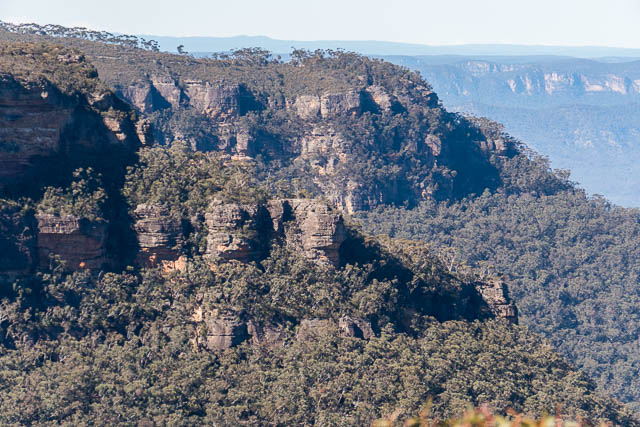
Glenraphael Head is the closest headland
It had been quite a few years since I had been up or down Carlons Head and it appears the track has changed. Both Bob and myself remember the track starting a short distance to the east of the intersection. Not any more. We thought we had found it, but followed up steep untracked country, climbing up to Carlons Head. A fair way up, we eventually found a track – coming in on our left. So it looks like the track now starts somewhere along another short road that goes to one of the electricity transmission line towers. Anyway – not being on the track was not a major problem. We soon climbed up to the base of the cliffs. The chains, used to assist the ascent – Mansons Chains, start a short way around the point to the left as you look up (the west side). I had heard that there had been problems with the chains – perhaps broken or sections missing? But they seemed pretty much as I remember. Possibly a few of the spikes had fallen off?
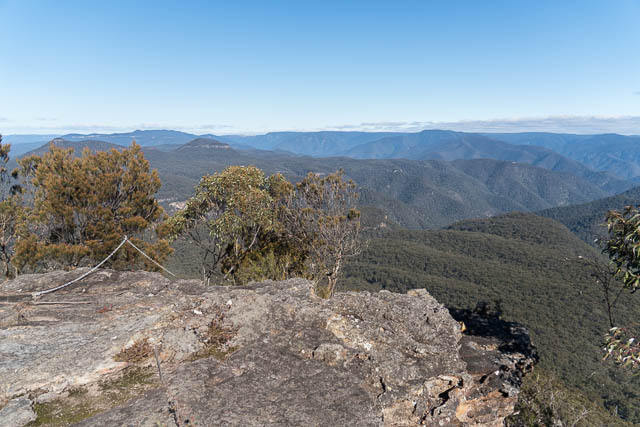
Top of Carlons Head
We soon climbed up the chains to reach the top of Carlons Head and the fine views. We also found a NPWS sign saying that the chains were no longer maintained and were dangerous.
After a short break, we continued on along the track to the fire tower and then followed the fire tail a short way to the south. Our next objective was to find the break in the cliffs that leads down to what has become known as the “Harmil Ledge”. It was a short walk through light scrub to reach this break and we descended down a hanging swamp to reach the start of a ledge. it seemed the right one. But we also saw what appeared to be a more open way of descending to this level a bit to the north. This would have avoided the hanging swamp.
It was confirmed that we were on the right ledge when we spotted a small pile of stones in an overhang and a logbook container.
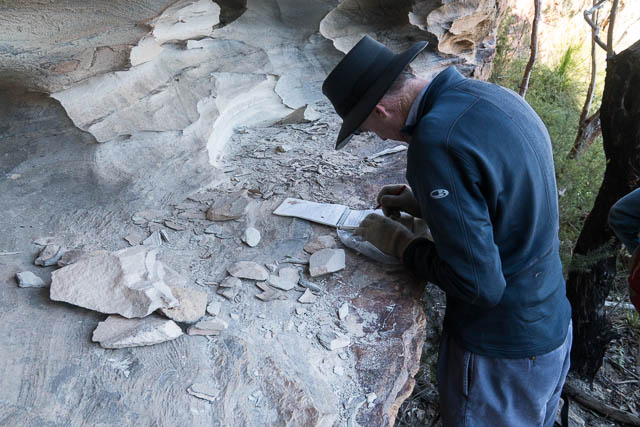
The logbook and quite a few entries. it seems that this is a popular route! Walking along the ledge towards Glenraphael Head was easy. Along the way, we found a nice sunny cave to stop for lunch. We were later entertained by a Wedge Tailed Eagle swooping past outside.
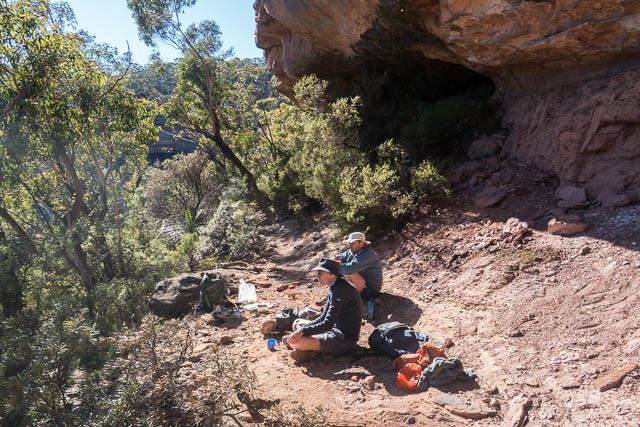
Both Bob and myself had been up Glenraphael Head on an earlier trip, many year before. On that occasion, we had ascended up via a different route that I think was pioneered by Jim Barrett, from the Catholic Bushwalkers in the early 1950’s. We were following notes from Jim Barrett’s monograph on Narrow Neck. We had scrambled easily up the lower cliffs to reach a high bluff. Then we had followed a ledge (now called the Harmil Ledge) to our left, for about 200 m till it was possible to continue scrambling up through to the top of the cliffs line. This last section was quite exposed and I can remember Bob leading the way and putting a rope down for me. That pass is more direct and takes you up to fine views, but it does involve trickier climbing and once on top – you find yourself in scrub. The Harmil Ledge seems to bypass both difficulties.
According to Brian Fox and Michael Keats in their “The Passes of Narrow Neck”, four members of the Warragul Club, including Harry Waite and Jack Gibson, had ascended Glenraphael Head in 1933. I am not sure if they used the same route found later by Jim Barrett or whether they continued along the Harmil Ledge to the easy break.
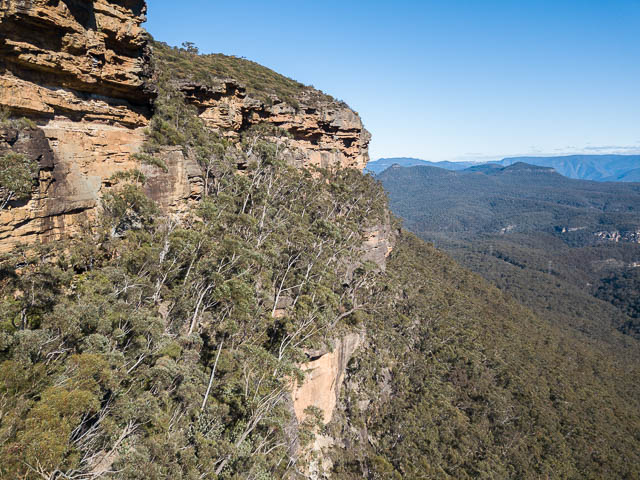
The Harmil Ledge
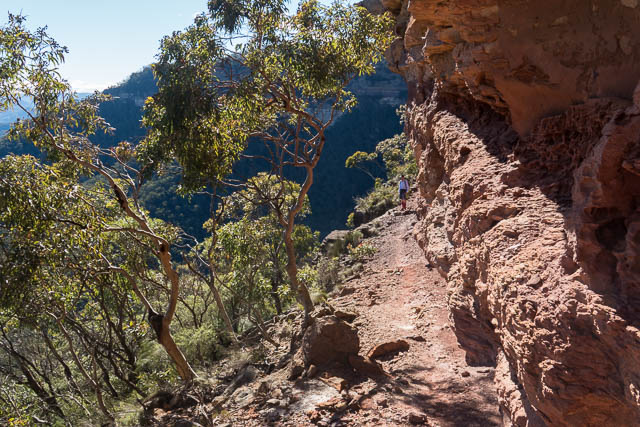
The Harmil Ledge
After lunch, on this trip, we continued along the Harmil Ledge to the point, just under Glenraphael Head.
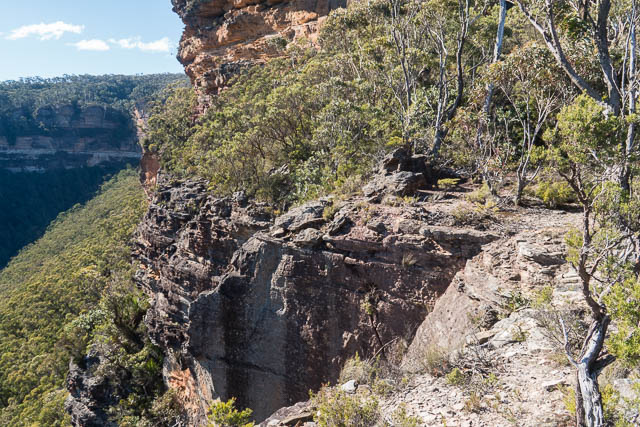
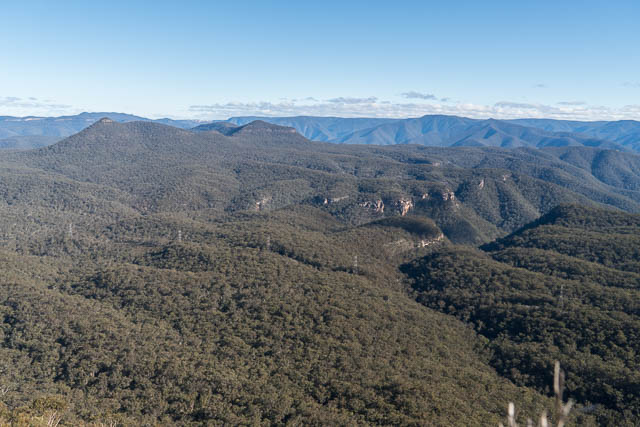
The going looked steep in front of us, and this time we used a handline in two places to aid our descent. We then followed an open ridge down to the Medlow Gap firewood which we followed back to the trail to the Dunphy Camp Ground.
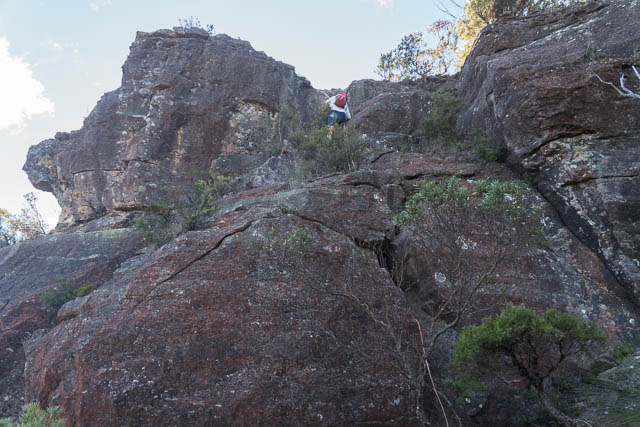
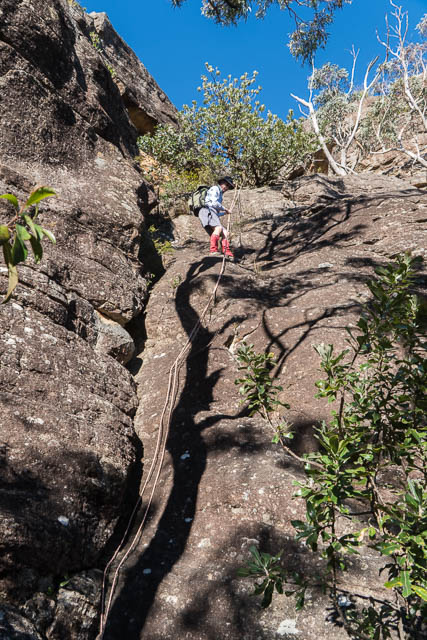
This was a pleasant trip in a very scenic part of the Blue Mountains. More photos are online on my website here.
